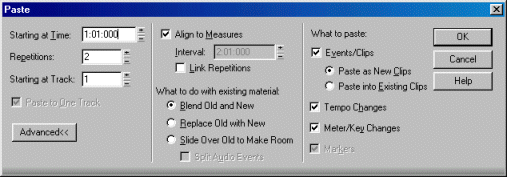Loop Scenarios
Last updated on 3/31/2016By Adam Burch, Cakewalk
Loops make composing faster and easier. Whether you are trimming a loop out of a performance you've recorded or importing one from the thousands of loop and sample CD's currently available, you'll want to keep these techniques in mind.
Turn Loop Playback On
Enable the loop playback mode (found in Pro Audio, Home Studio and Guitar Studio). Loop playback is in all programs, but it's sometimes called "Loop and Autoshuttle"--depending on the program-- and can be enabled by clicking in the Realtime menu, or by using the Loop Toolbar. That's all there is to it. From then on, the program will automatically jump back to the start of the loop when it reaches the end.
|
Methods of Adjusting Loop Start & End Times
|
|
Drop Markers
Insert a Marker during playback to mark approximate loop times. Use the F11 key to drop a marker while you listen. Then you can go back and fine-tune your loop times as needed.
Pasting your Loop
After you find the perfect loop points, most folks want to use Edit, Copy and Edit, Paste to use the loop in their song. Here’s one way to do that:
- Make sure your loop is selected then click Edit, Copy.
- Choose Edit, Paste. In the Paste dialogue you’ll need to determine:
- When will the pasted loop parts start?
- How many repetitions?
- Put a check in the Align to Measures box to have all your loops begin at measure boundaries
- Click OK to paste your loops.

Enter the correct start time, repetitions and enable Align to Measures in the Paste dialog box.
